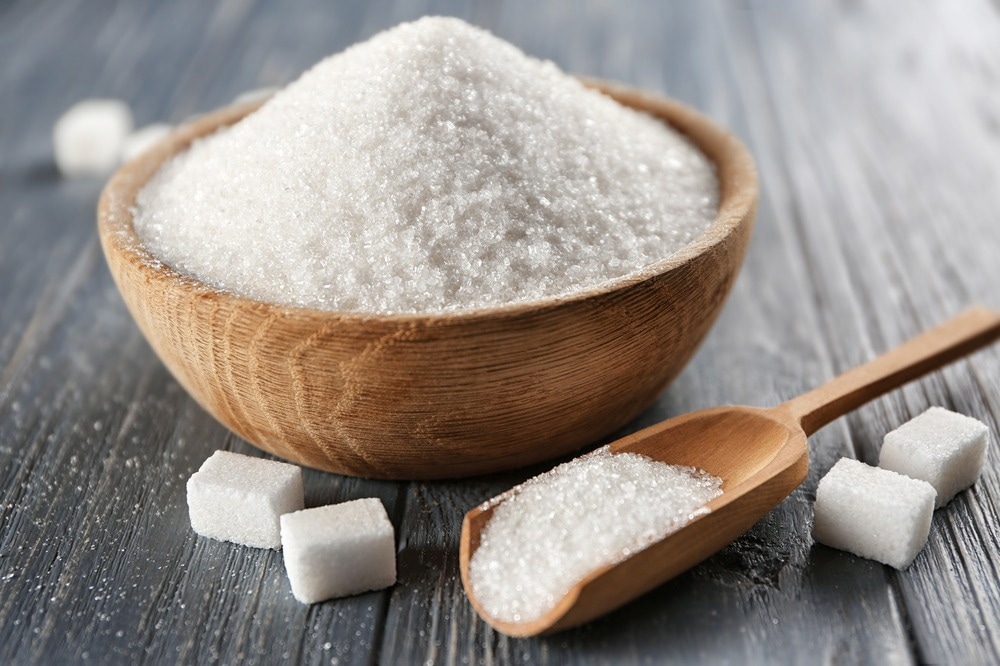In a recent study published in the journal Nutrients, researchers review the bioactive properties of the non-reducing disaccharide trehalose and discuss its potential pharmaceutical, medical, cosmetic, and food-related applications.

Study: Dietary Trehalose as a Bioactive Nutrient. Image Credit: Africa Studio / Shutterstock.com
What is trehalose?
Trehalose is a disaccharide that is naturally found in fungi, plants, bacteria, insects, and some invertebrates.
Moreover, this sugar consists of two glucopyranosyl molecules joined through an α,α-1, 1-glycosidic linkage. Trehalose also contains an end hydroxyl group that is non-reducing, thus protecting it from glycation and acid hydrolysis.
The bioprotective properties of trehalose have resulted in its extensive use as a food preservative, packaging material, drug excipient, and desiccant.
Other bioactive and biological properties, such as the suppression of inflammation and bone resorption, alleviation of symptoms of Huntington’s disease, and ability to induce autophagy, have generated increased interest in exploring the potential therapeutic properties and uses of trehalose. In fact, several studies have explored the use of trehalose in the modulation of gut microflora and regulation of blood sugar levels.
Chemical and biochemical properties of trehalose
The O-glycosidic linkage connecting the two glucopyranose molecules in trehalose makes it one of the least reactive sugars. Trehalose also does not have any free aldehyde groups, thus making it non-reducing and highly stable.
Only under extreme conditions of hydrolysis does trehalose break down into its constituent monosaccharides. Furthermore, the high glass transition temperature of 110-120 °C ensures that trehalose transitions from a solid to a rubbery or viscous state.
Trehalose also exhibits protective properties against lyophilization and heat shock and is used as a stabilizing agent in food.
Trehalose as a dietary sugar
Before the discovery of the enzymatic technology that increases the production of trehalose by liberating trehalose from starch, trehalose consumption mainly occurred through natural sources such as yeast, beans, seafood, seaweed, honey, and mushrooms.
With the discovery of the aforementioned enzymatic production method, trehalose was produced on an industrial scale and added to various food items such as breakfast cereals, pasta, baked goods, ice cream, chewing gum, dairy products, dried fruits, and confectionary items. Trehalose was preferred because its long-lasting sweetness.
The enzyme trehalase is mainly found in the small intestine of humans; however, it can also be found in lower concentrations in the liver, kidneys, and peripheral lymphocytes. Trehalase produced by gut microbes such as Escherichia coli, Clostridioides difficile, and species of Blautia and Bacillus also hydrolyze trehalose and use the glucose molecules for glycolysis.
Trehalase can hydrolyze trehalose into two glucose molecules. While rare, some individuals have a metabolic condition where they lack the trehalase enzyme.
In these individuals, the inability to break down trehalose results in vomiting, abdominal pain, and diarrhea when they consume food with trehalose. Almost 8% of the population of Greenland has an autosomal dominant condition that causes trehalase deficiency.
Trehalose for diabetes management
Trehalose is associated with a slower release of glucose and an insulin response that is milder than those associated with other sugars, thereby resulting in a relatively slow rise in blood sugar. Trehalose consumption is thought to benefit hyperglycemic conditions by enhancing insulin sensitivity and reducing the accumulation of adipocytes.
This subsequently reduces insulin secretion, controls postprandial levels of glucose, regulates the postprandial secretion of insulin, improves the function of beta cells in the pancreas, reduces oxidative stress, and suppresses inflammatory responses.
Trehalose and the gut microbiome
The use of trehalose as a prebiotic has been shown to improve the growth of lactic acid bacteria such as Lactococcus.
Previous studies in mouse models have shown that the abundance and diversity of gut microbiota changed in association with the type of sugar consumed. Fructose and glucose-rich diets, for example, led to a reduced abundance and diversity of Bacteroides species and an increased abundance of Proteobacteria. Artificial sweeteners such as saccharin and sucralose can also cause microbiome dysbiosis.
Increased trehalose consumption has been linked to the proliferation of hyper-virulent strains of C. difficile, which is a Gram-positive and spore-forming pathogenic bacteria. However, various other studies have reported that the occurrence of C. difficile infections is not linked to the global rise in trehalose consumption.
Conclusions
Trehalose is associated with various advantageous properties that could be beneficial in the management of certain medical conditions.
Among other properties, the slow release of glucose combined with the gradual insulin response stimulated by trehalose presents possible diabetes mitigation applications. The ability to suppress inflammatory responses and alleviate symptoms of neurodegenerative symptoms also makes trehalose a potential candidate for further research in disease management.
Journal reference:
- Chen, A., & Gibney, P. A. (2023). Dietary Trehalose as a Bioactive Nutrient. Nutrients 15(6); 1393. doi:10.3390/nu15061393